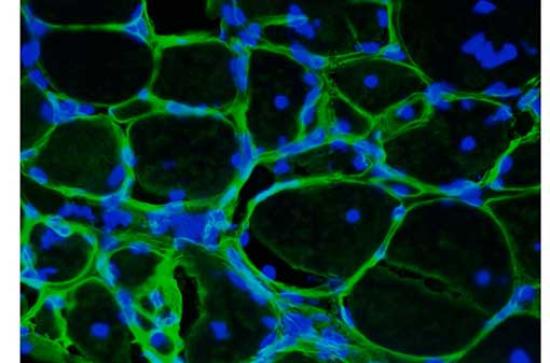
Correlation between two proteins serves as diagnostic marker
New research conducted by Maynooth University, the University of Bonn, and Dublin City University has identified a previously undiscovered relationship between proteins that could have an “immediate impact” on the diagnosis of muscular dystrophy as well as significant implications for treatment of the disease.
This progressive muscle degenerative disorder is a genetic condition that is transmitted on the X chromosome, meaning only young males can develop the disease. Muscular dystrophy is the most common inherited neuro-muscular condition—affecting one in 3,500 Irish boys. Sufferers are usually wheelchair bound by the age of 12 and have an average life expectancy of 20 years.
Muscular dystrophy affects the body’s ability to produce the protein dystrophin, which is responsible for muscle stability and elasticity. One of the most problematic issues in the treatment of this condition is the progressive development of scar tissue as the muscle degenerates. Previous research has demonstrated that excessive levels of the structural protein, collagen, is a major contributing factor to the development of this tissue. This new research has now established a correlation between collagen and periostin—a regulator protein. It is thought that periostin plays some part in dictating collagen production.
Professor Kay Ohlendieck, Chair of the Maynooth University Department of Biology, spoke about the significance of discovering this relationship between the two proteins: “This is a massive step forward for the treatment of muscular dystrophy. Identifying the correlation between these proteins will have an immediate impact on how early muscular dystrophy is diagnosed, because high levels of both proteins can serve as a diagnostic marker. Moving forward, we hope to establish an even greater understanding of the relationship between the two proteins. Manipulation of periostin could enable us to prevent excessive collagen build-up and support the natural process of repair and regeneration in muscle tissue.”
The research, which was published recently in the prestigious biochemical journal Proteomics, was funded by the Irish Higher Education Authority, Muscular Dystrophy Ireland, and the German Muscular Dystrophy Association.
The study focused on the analysis of over 1,000 different proteins using a mass spectrometer, a device that measures increases and decreases in proteins present in a given sample. “For this research, the sensitivity of the equipment is crucial, and Maynooth University is leading the field in terms of cutting-edge technology. Every day, improving technology enables scientists to take a step closer to making diseases like muscular dystrophy, which afflict thousands worldwide, a thing of the past,” Prof Ohlendieck said.
The international research project was carried out by Prof Kay Ohlendieck, postgraduate student Ashling Holland, Dr Paul Dowling from Maynooth University; Prof Dieter Swandulla, Dr Rustam Mundegar and Ms Margit Zweyer from the University of Bonn; and Dr Paula Meleady and Mr Michael Henry from Dublin City University.
